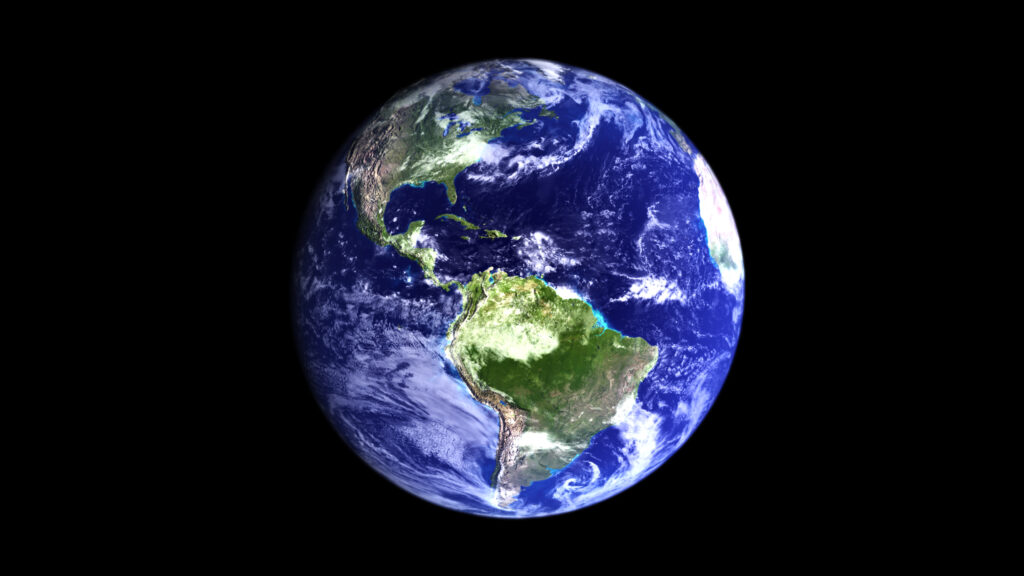People caught in the grips of the theory of anthropogenic global warming (AGW), the idea that human activities, primarily fossil fuel use, are causing catastrophic change in the world’s climate, seem to live with blinders on, unable to admit evidence to the contrary.
I don’t begrudge the opinion of scientists who believe their own research shows, or who believe the dominant number of peer-reviewed papers indicates, humans are causing dangerous climate change. But I do disagree with many of the assumptions made by proponents of AGW. So far, evidence shows most of their projections concerning temperatures, ice, hurricanes, species extinction, etc. have failed. As a result, their projections of future climate conditions are not nearly trustworthy enough to make the kind of fundamental, wrenching, and costly changes to our economy and systems of government AGW proponents have proposed to fight climate change. I don’t think climate scientists can foretell the future any better than the average palm reader.
Making matters worse, AGW proponents discount, or ignore entirely, powerful studies that seem to undermine many of their assumptions and refute most of their conclusions.
Admittedly, I start with a position of skepticism, and indeed suspicion, when well-known researchers release a new study purporting to reinforce or provide further evidence AGW is true. This isn’t because I don’t want to hear what those who disagree with my assessment have to say. Rather, it’s based on my understanding of the lengths to which AGW true believers have gone to manipulate temperature data and try to shoehorn or force this and other data to match their dire projections.
It is reasonable, and even expected, for educated people to disagree with one another on this issue. This back-and-forth exchange of points and counterpoints shows the scientific method functioning as it should.
Many AGW believers, however, have seemingly abandoned the scientific method.
Progress is made in science by proposing a hypothesis, and developing a theory, to explain or understand certain phenomena, and then testing the hypothesis against reality. A particular hypothesis is considered superior to others when, through testing, it is shown to have more explanatory power than competing theories or hypotheses and when other scientists running the same testing regime can reproduce the results of the original test. Every theory or hypothesis must be disconfirmable in principle, such that if the theory predicts ‘A’ will occur under certain conditions, but instead sometimes ‘B’ or ‘C’ results, then the theory has problems. The more a hypothesis’ predictions prove inconsistent with results that occur during testing or real-world data, the less likely the hypothesis is to be correct.
AGW theory does not work this way. No matter what the climate phenomenon, if it can in some way be presented as being unusual by AGW proponents, it is argued to be “further evidence of global warming,” even if it contradicts earlier phenomena pointed to by the same people as evidence of global warming.
What effects AGW will have seem to depend on which scientist one consults and which model they use. In realm of climate change research, different models looking at the same phenomenon applying the same laws of physics with the same inputs produce dramatically varied results.
Another indication AGW advocates have thrown over the scientific method is how they revert to various logical fallacies to manipulate peoples’ emotions in order to have the public dismiss climate realists’ arguments and research. AGW advocates commit the fallacy of ad hominem when they call researchers who disagree with their assessment of the strength of the case for AGW “deniers”—an obvious attempt to link them in the public’s mind with despicable Holocaust deniers. That is not science, it’s rhetoric. I know of no one who denies the fact climate changes, but there are significant uncertainties and legitimate disagreements regarding the extent of humanity’s role in recent climate changes and whether these will be disastrous. Those who refuse to acknowledge highly regarded scientists disagree with AGW are the real “deniers,” and they should suffer the opprobrium rightfully attached to that label.
AGW proponents commit the fallacy of appeal to numbers when they say the case for dangerous human-caused climate change is settled because some high percentage of a subset of scholars agrees humans are causing dangerous climate change. Consensus is a political, not a scientific, term. People once thought Earth was flat. Galileo disagreed, saying he believed it was round—and he was persecuted for saying so. And you know what? Galileo was right, and the consensus of the time was wrong. At one time, people, including the intellectual elite, believed Earth was the center of the universe and the Sun revolved around it. Copernicus said just the opposite. He was right, and everyone else was wrong.
Knowledge acquisition succeeds not through bowing to some purported consensus in thought and opinion, but through questioning previously received wisdom and continuously testing scientific theories against data. “Because the vast majority of us said so,” is not a legitimate scientific response to research raising questions about all or some part of AGW.
AGW researchers commit the fallacy of appeal to motive when they say a particular study or the work of a particular scientist or group of scientists should not be taken seriously because of who funded them. Both sides commit this fallacy, with climate skeptics often arguing AGW research is biased based on the fact it was funded by government, which history shows is predisposed toward finding reasons grow and exert ever more control over people.
Research should be judged based on the validity of its assumptions, whether its premises are true, and whether its conclusions follow from its premises, not on who funded the research. Data, evidence, and logic are the hallmarks of science, not motives.
Beyond the routine data manipulation and logical fallacies, AGW advocates’ own e-mails show they have tried to suppress the publication of research skeptical toward AGW. And they have routinely attempted to interfere with the career advancement of scholars who refuse to completely toe the AGW line, even stooping on occasion to try to get scholars fired for producing research undermining AGW.
AGW fanatics also try to suppress the teaching of a balanced, accurate understanding of the current state of climate science, with all it uncertainties, in the nation’s schools. This is the tool of the propagandist, not the scientist seeking the truth.
All these reflections came to a head in recent years, as AGW true believers have fought in court to prevent the release of the data underpinning their own research, attempted to suppress free speech by accusing those with whom they disagree of committing libel, and even on occasion called for the prosecution and incarceration of climate skeptics for daring to question AGW orthodoxy. Some AGW proponents have openly admired various authoritarian regimes for their ability to “get things done” without the interference of democratic institutions. Real scientists know truths do not bloom under authoritarianism.
When a theory does not comport with the facts, data, and evidence, it is the theory that should be questioned, not the data or the motives of those bringing such evidence to the world’s attention. Consider this my plea for AGW true believers to embrace, once again, the scientific method, to follow the evidence in the field of climate research where it leads even if it proves inconvenient or inconsistent with their earlier beliefs. To the extent I myself have failed to live up to this ideal, I will try and do the same, approaching AGW arguments with an open mind.
— H. Sterling Burnett
SOURCES: Human Events; Breitbart; Science and Public Policy Institute
IN THIS ISSUE …
Europe imports more U.S. coal… Antarctica not melting … Climate change won’t change weather predictability
Even as European leaders complain about President Donald Trump’s decision to withdraw the United States from the Paris climate agreement, U.S. carbon dioxide emissions continue to decline. By contrast those countries complaining the loudest have seen their emissions grow. The reason for these disparate trajectories is not hard to find: while coal use continued to decline in the United States, it grew in Europe.
The Washington Times reports, “The U.S. last year produced 773 million short tons of coal, 45 million more than 2016. That was the largest year-to-year increase in nearly two decades, government numbers show.” Despite increased coal production, its use in the United States declined by 12 million tons from 2016 to 2017. At the same time, U.S. coal exports rose by 95 million tons, or 58 percent, in 2017. Europe imported 13 million more tons of coal in 2017 than it had in 2016, an increase of nearly 33 percent. Much of that coal came from the United States.
Thus, while Emmanuel Macron, president of France, and other European leaders like German Chancellor Angela Merkel chided Trump for leaving the Paris agreement to limit use of fossil fuels, their countries grew both their use of U.S. coal and carbon dioxide emissions. The Washington Times reports, “Through September 2017, France imported 1.5 million short tons of American coal—double the amount in 2016 … [while] Germany imported 3.4 million short tons, compared with 2.5 million in 2016.” In early 2017, France and Germany announced they had missed their short-term carbon dioxide emission goals. France’s emissions grew by 3.6 percent in 2016 and were expected to be above target in 2017 as well. Germany had previously admitted its emissions had grown and it would be unable to meet its carbon dioxide reduction goals under the Paris climate agreement through at least 2020.
SOURCE: The Washington Times
A team of scientists from New Zealand bored two small holes more than 1,100 feet down to the bottom Ross Ice Shelf, one of the ice shelves buttressing the West Antarctic Ice Sheet, to determine whether climate change could be causing it to melt and lead to a collapse of the entire ice sheet. What they found has surprised them: at the bottom of the bore hole where the ice shelf meets the ocean, the ice is not melting; instead, new ice is forming.
The West Antarctic Ice Sheet, up to 10,000 feet thick in some places, contains enough water to raise sea levels 10 feet if it collapses and melts. Fortunately, despite climate model projections indicating Antarctica should be losing ice, the continent is gaining ice, both above and now, it seems, below as well. The new research indicates the Ross Ice Shelf is stable at present. The researchers expected the cameras lowered down the boreholes to show smooth undersides of the Ross Ice Shelf, indicating a gradual melting. What they found instead was “ice adorned with a glittering layer of flat ice crystals—like a jumble of snowflakes—evidence that sea water is actually freezing onto the base of the ice instead of melting it.”
“‘It blew our minds,’ says Christina Hulbe, a glaciologist from the University of Otago in New Zealand, who co-led the expedition,” in National Geographic. The research team speculates the sea water periodically freezing onto the bottom of the ice shelf could be preventing it from thinning, helping to stabilize the entire West Antarctic Ice Sheet.
SOURCE: National Geographic
CLIMATE CHANGE WON’T CHANGE WEATHER PREDICTABILITY
A new study from an international team of researchers from the United States and Russia published in the journal Atmosphere suggests even if rising carbon dioxide levels cause warmer temperatures in the future, the weather will likely remain at least as predictable in the future as it is at present.
Using Institute Pierre Simon Laplace Climate Models four and five for the Northern Hemisphere to simulate jet stream flow, the researchers monitored variables that respond to jet stream flow changes which typically indicate global-scale weather instability. Currently, meteorologists can only accurately predict weather within the 10 to 12 days between jet stream flow changes. If the time frame between jet stream flow shifts was altered by warmer temperatures, it would affect weather predictability. In simulations assuming various amounts of additional warming, however, the jet stream time frame remained consistent, indicating weather would likely remain as predictable in a warmer world as it is today.
SOURCE: Atmosphere
The Climate Change Weekly Newsletter has been moved to HeartlandDailyNews.com. Please check there for future updates!





